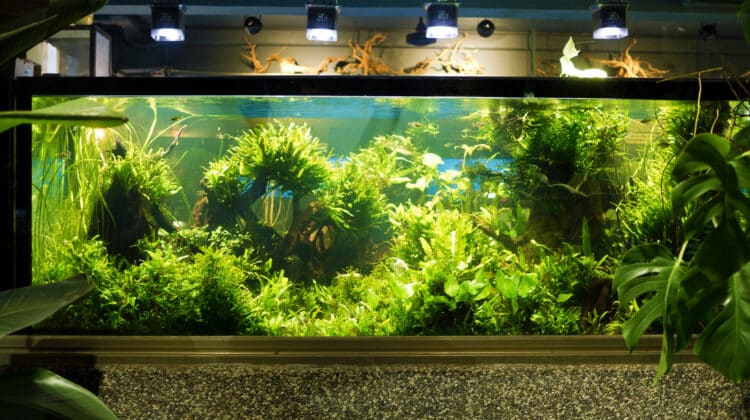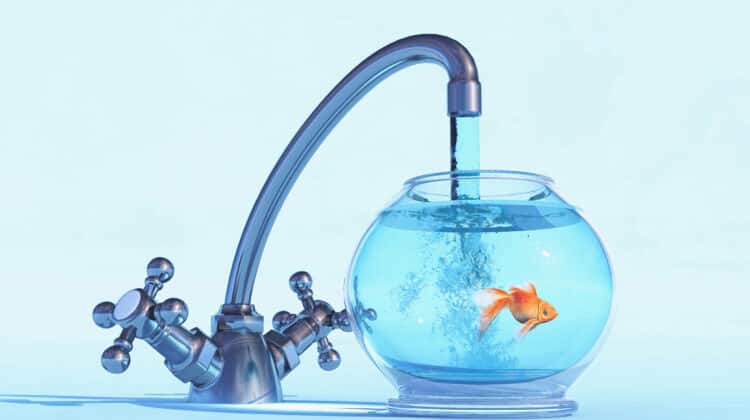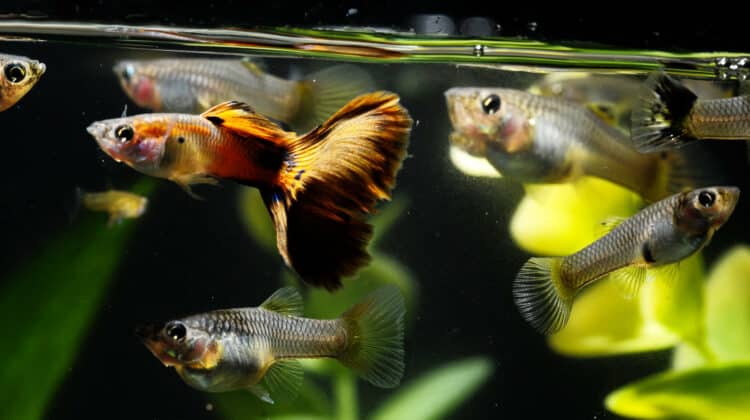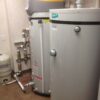
Are you a new tropical fish owner and want to know how to make tap water safe for a saltwater aquarium?
Being a new owner, there are many important things to consider. But the most crucial aspect is the aquarium water. It is the primary element of any fish tank. It means you have to give it thoughtful consideration and don’t rush into it. You should learn about the different processes and find out what suits you best.
Water is the essential element for all life forms, be it plants or animals. Aquatic creatures like tropical fish originally come from coral reefs but have become house pets. They originally live in saltwater and have to adapt themselves to thrive in municipal tap or water from a well.
So you have to make sure that the water for your precious fish is safe and won’t make them ill. It is one of your many responsibilities to fish owners.
Table of Contents
How to make tap water safe for saltwater aquarium: Tap water issues
Many cities or municipal water providers treat their water with either chlorine or chloramine to kill any contaminants present. These are safe for human consumption but might present a problem for exotic fish.
There are dechlorinating products available for purchase in your local pet store, but they might not be enough to breach the chloramine bond. So you need to find out if the product you want to buy states that it’s capable of getting rid of chloramines in the water.
If your water provider does not maintain the correct chlorine or chloramine levels that can terminate bacteria. A bacterial outbreak might happen, and you and your fish will be put at risk.
Testing the water
If you have concerns with your local tap, you can always have it tested professionally, so you will know what’s in it. Yet, even if the test returns with positive results, you can’t help it if your water provider will do some alterations at any given time that makes the results different.
There are naturally occurring compounds in water, like nitrates, silicates, and phosphates. And it is not uncommon for some sources to comprise large concentrations of these elements.
If these aren’t taken out before using them for your aquarium, it can provide a living space for algae blooms and have many more issues.
Iron and copper are also problematic to aquatic creatures and sometimes are present in the household tap.
So how can you make sure your tap water is safe for your aquarium fish? There will be no guarantees that even if you get a filter and purify your H2O, no issues will occur.
The best solution is to know all the types of water filtration and the kind of tap you have in your home. That way, you will know which method will suit you, your water source, and your pet fish.
Is tap water safe for fish?
You might have questions like, can fish live in tap water? Or, can I use distilled water in a fish tank? Or more specifically, can I use tap water for my fish?
The short answer is yes you can use tap water in your saltwater aquarium. But you have to know first what comprises your local tap, so you will know how to acquaint it to your fish tank.
How to make tap water safe for saltwater aquarium
There are many ways to make the tap water safe for your aquatic pets, and one way is to use a conditioner. Yet, this isn’t a foolproof way since your H2O might have additives that the conditioner isn’t able to remove like chloramine and other harmful solids, which might lead to tank failure.
If you want to treat your water correctly, you have to know what it is composed of. To know that, you have to call your water provider (which may work for your local government) and ask them what is made up of and the additives included.
It will properly inform you on the best filtering method you need to apply for your fish tank.
Chlorine and chloramine facts
Your tap water most likely is treated with either chloramine or chlorine. You might think it’s the same thing, but there is a definite distinction.
Chlorine dissolves quickly in the water but combined with ammonia, chloramine is created. It has a longer staying power compared to chlorine and might be harder to filter out.
Your water provider adds either of them to your water source to kill any germs present and make it clean for drinking. However, it might have ill effects on your pet fish.
Yet, your water supplier might not use either of them. Yet, you can make tests on your own or contact them and ask what is used to treat your H2O.
Is RO water safe or not?
Reverse osmosis or RO unit for a saltwater tank is a practical and effective method of water filtration. And it is also preferred for many homeowners that have aquatic pets.
It utilizes pressure that forces water into a semipermeable membrane that filters out contaminants like bacteria, dissolved salts, and metals like lead or copper.
The filter cartridges will have to be substituted frequently. It is because membrane pores will congest from the dirt and impurities that were filtered out.
How long the cartridges will last will depend on the H2O quality. If your tap water is relatively clean, the membrane will last for a long period. If your tap has many harmful minerals, its life span will be shorter.
Distilled water for aquarium
It is the most effective water purifying method, even more than RO. Simply speaking, it functions by boiling water.
Then the evaporated H2O is then trapped, collected, and put in bottles. The impurities and contaminants are left behind, which are disposed of.
Distilled H2O can be bought, but it will be more expensive this way. Also, a unit for distillation is not available to purchase commercially for personal use.
Steps in purifying water for your aquarium
When you talk about water, you may think there’s only one kind, but there are many types. H2O refers to its purest form, which only has water molecules.
There are also raw waters that come from nature like ocean water, stream water, groundwater, etc. These have various mineral substrates that are dissolved in them.
For example, salts are amassed in the ocean, and rocks are dissolved into rivers, lakes, and streams. And don’t forget, some microorganisms are living in those waters, some are harmful, and some aren’t.
Since these water types are unsafe to drink, your water provider treats them with disinfectants like chloramine, chlorine, pH balancers, and other solutions that make them safer for consumption.
However, these types of water treatments make tap water hazardous, and in some cases, even deadly to aquatic creatures. For this reason, you cannot put in tap water directly from the faucet since it’s not clean enough.
Also, filtration methods remove good minerals from it, so you have to add them back in the water.
Aquarium preparation stage
After you are done with the steps, the finished is known as make-up water. It is the kind you will be making regularly for your aquarium.
Evert time make-up water is made, the entire process will take four steps.
Step One: Shocking the tap water
At this stage, you will have to disinfect your tap water by including chlorine, which is bleach.
Do not utilize the non-spill kind, which has additives that also have to be removed. Be careful when handling chlorine in any form since it can cause harm.
It is known as shocking the water. It will terminate any harmful bacteria and other contaminants present in the water. Be sure to pour it in a large container with a cap on it.
Step two: Shocking the chlorine, or de-chlorination
The de-chlorination process will neutralize the chlorine with a chemical solution, which has sodium thiosulfate in it. You will only need a small amount of it, and salt will be the residual matter remaining.
At this stage, don’t utilize any other disinfectant, except if you know how to neutralize it.
This solution will only get rid of bacteria, and other harmful elements will remain like silicates, nitrates, and phosphates, and all of these cause algae blooms.
Also, iron, copper, and other harmful heavy metals won’t be removed. These come from your household pipework and damaging to aquatic creatures.
Step three: Filtering out impurities
Your make-up water still has to undergo another filtration procedure, and fortunately, there are many you can choose from. Along with RO, distillation, and a conditioner solution, you can also do carbon filtration.
It involves activated carbon or charcoal in the form of a fine grain that has an available surface area. It can remove all sorts of metal pollutants.
It can make the quality of the water better by getting rid of dissolved solids. Of which are oil, tiny dirt particles, and debris in the water. If the water gets through it, it removes ammonia or phenolic-based compounds, which are the substances that cause foul odors.
Your aquarium fish friends and their grub are continuously expelling out urinary and fecal matter that you want to remove. You want to remove them since it will affect the health of your fish.
RODI system for freshwater aquarium
What is RODI water? It is a combination of RO and DI (deionization), which is a more effective filtration for your aquarium.
The RO DI water for a saltwater aquarium is a two-part process. Wherein the RO is done first, the DI technology removes the charged particles and creates the same end product, which is the make-up water. But all of these going through a different method.
Both RO DI water filter for aquarium cleanses the water at a molecular level. It will ensure that your tank water is clean and make the fish live by healthy means.
However, these are a bit expensive. But if you care for your tropical fish, money won’t be an issue.
Step four: Adding back vital minerals and salts
Once you have filtered out all the contaminants, the water might be too clean for your fish. Even people need a few dissolved substances like minerals and electrolytes in the drinking water, and your fishy friends have the same needs.
All creatures and plants that live in water need minerals that imitate the natural condition of Earth where they originate. If you’re trying to imitate a beach or a reef in the ocean in your aquarium, there should be minerals dissolved in the water.
Research the kind of minerals your pet fish require so you can include them in your tank. For saltwater, consult your local pet store on the correct salt mixture to add to your tank. There are various mineral and salt levels to correspond to the particular environment you are trying to simulate.
Other clean water sources
There are other alternatives water sources for your aquarium if you don’t want to go through the four steps. These options are dependent on where you live, and if you have any of them close by, you won’t need to undergo steps one to three.
- If you live close to a public aquarium, find out if they sell filtered natural seawater so you can buy one for your own.
- Check if there are public RO DI water for saltwater aquarium dispensers, which your local government may have set up or by your local pet stores. You can purchase aquarium water by gallon.
- This choice might be a bit expensive, but you can buy distilled water by bottle in commercial stores.
- Some bottled water companies have industrial RODI facilities, which you can buy for your aquarium.
Water from bottling companies uses copper tubes for distillation, and your fishy friends do not react well to copper. You can call that bottling company and ask if they do use copper tubing. If you can’t get that information from them, you can do some tests on the copper level in that water.
Conclusion
Once you know how to produce suitable aquarium water for your aquatic friends, you still have to regularly replace it. You should also perform tests to check if it is just right.
If you want to have an enviable aquarium that you can show off to your friends and family, always be aware of the needs of your fish, and their water is on top of the list.





